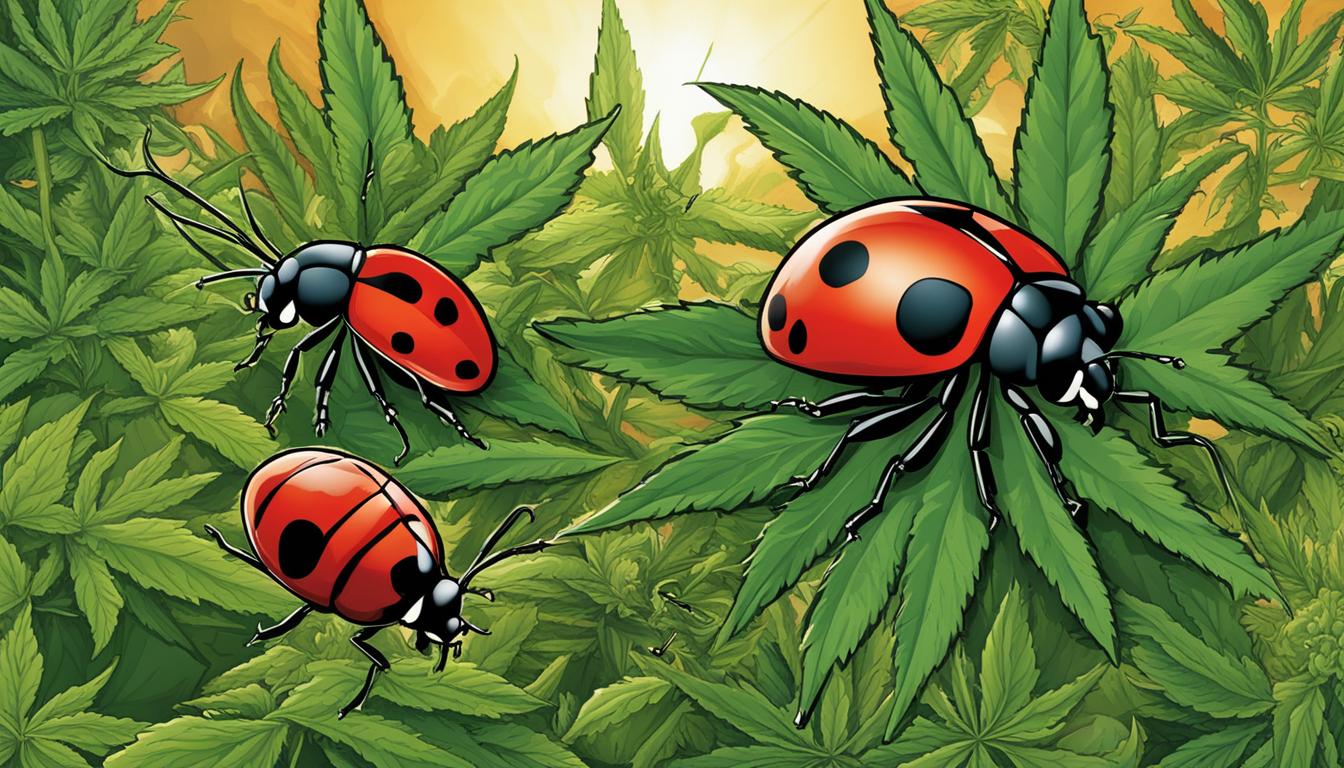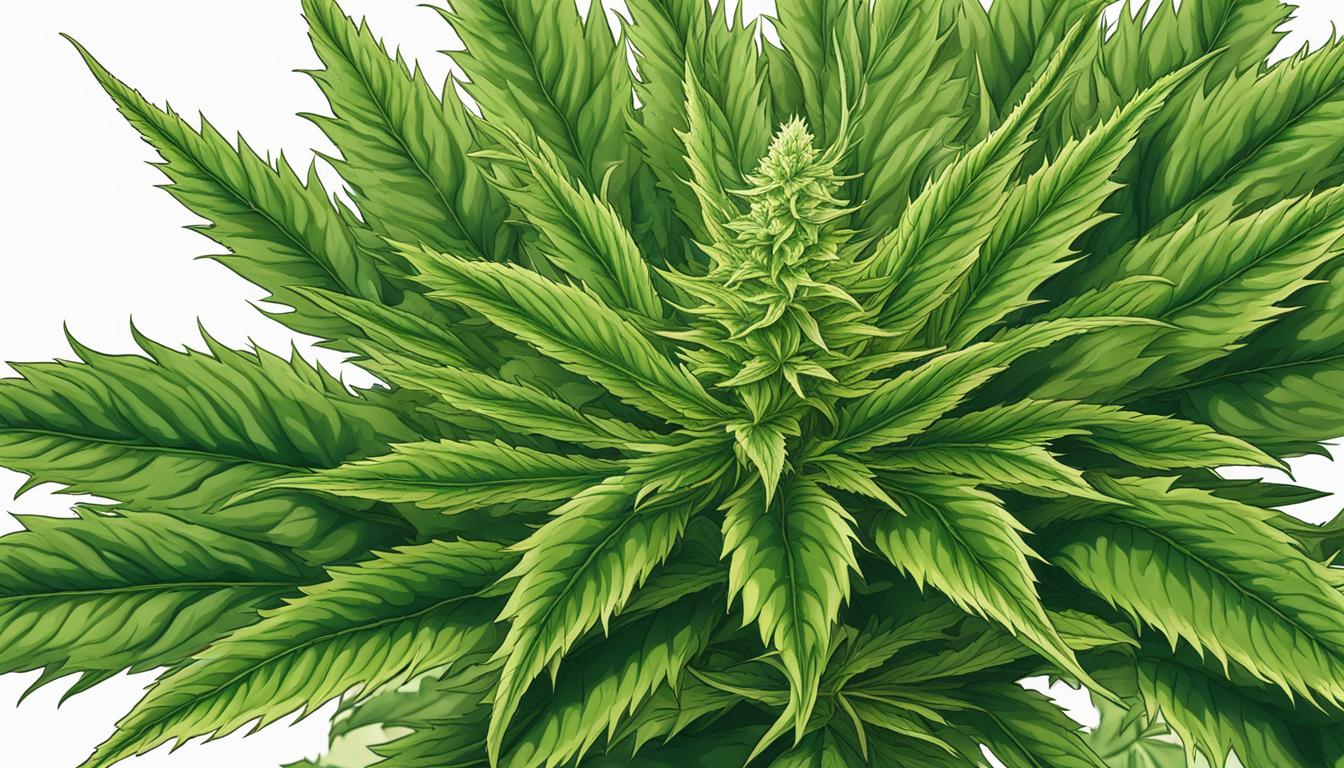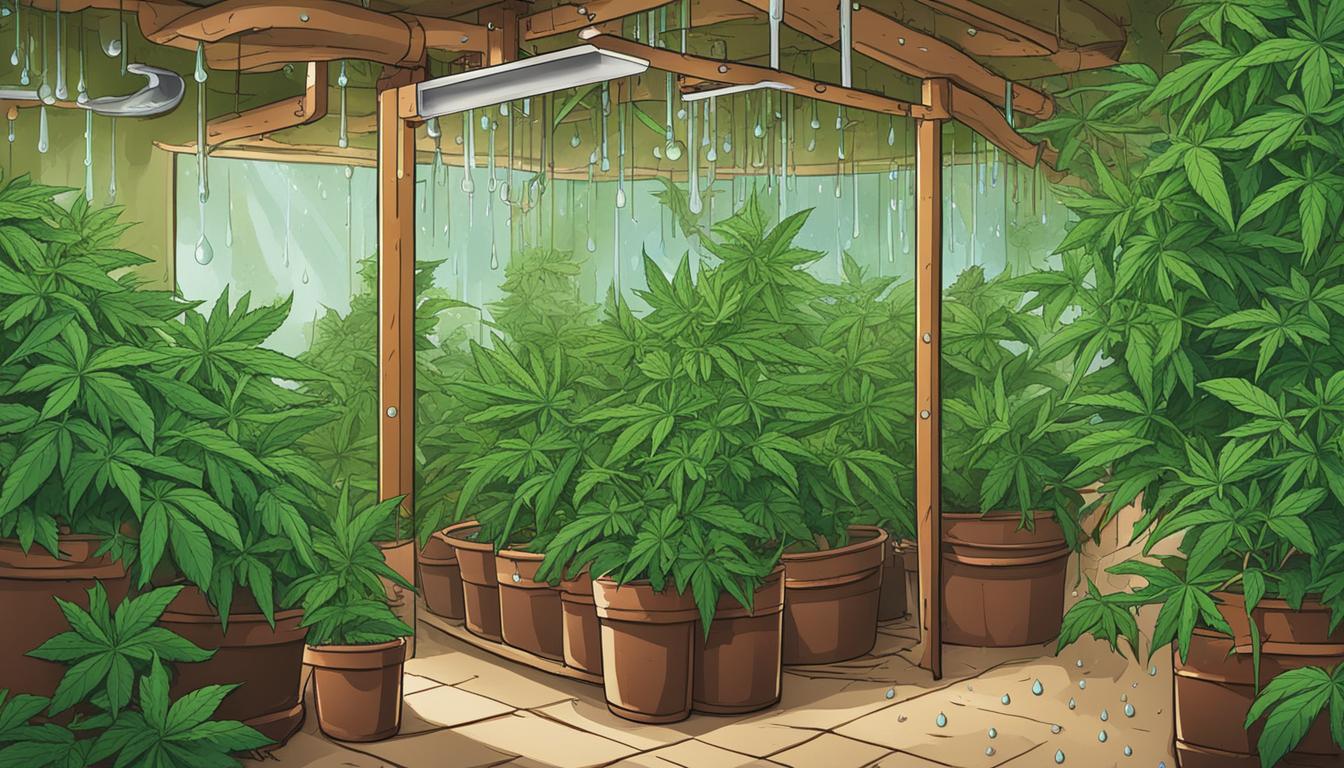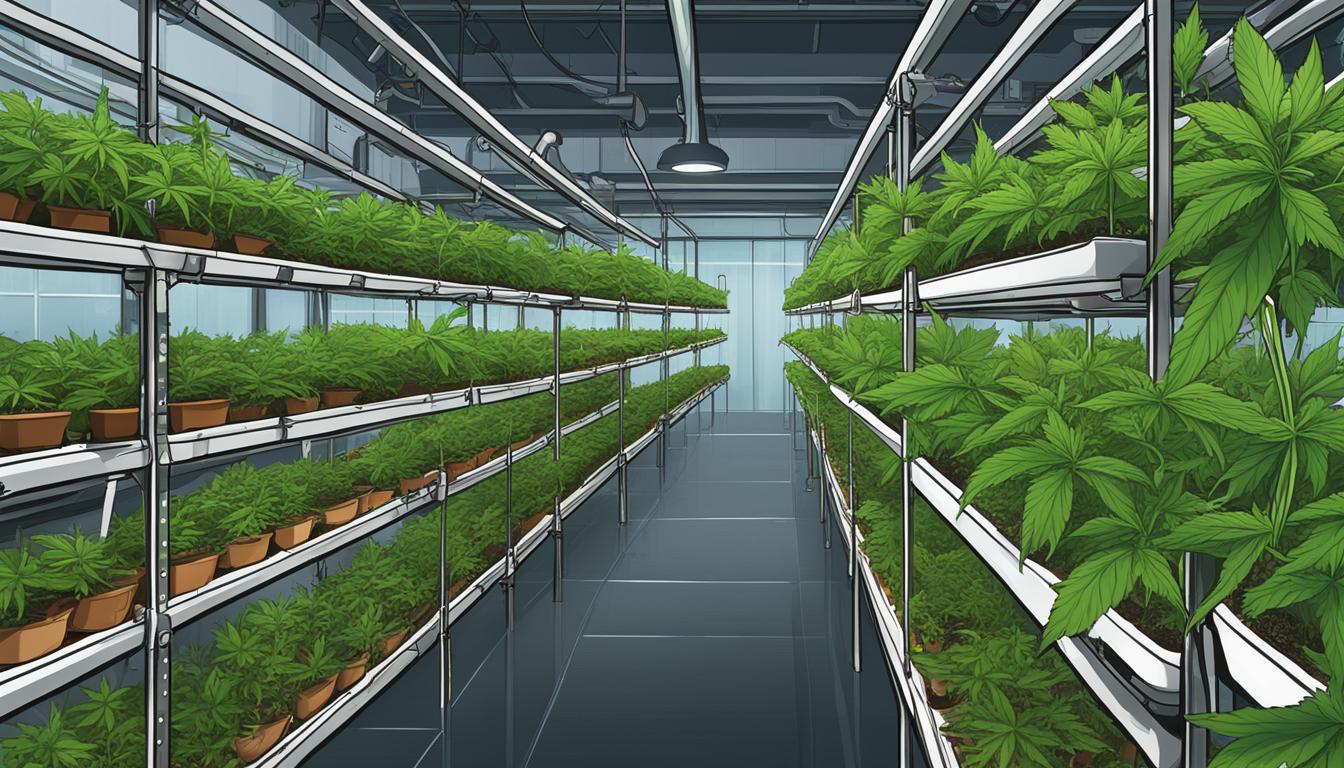As a cannabis gardener, you want to ensure your plants grow healthy and strong. However, pests can pose a significant threat to your cannabis crops, causing damage and reducing yields. To combat this problem, it is essential to learn the best practices for pest control in cannabis gardening. By doing so, you can minimize the risk of a pest infestation and protect your plants from harmful bugs and diseases.
In this section, we will explore the most effective strategies for controlling pests in cannabis gardening. From understanding the importance of pest control to implementing sustainable and eco-friendly practices, you will discover a range of techniques to help keep your cannabis garden healthy and thriving.
Key Takeaways:
- Effective pest control is crucial for the health of your cannabis plants and the overall yield of your crop.
- Integrated Pest Management (IPM) is a holistic approach that combines various techniques to manage pests in a sustainable manner.
- Natural and organic pest control methods, such as biological controls, beneficial insects, and homemade organic sprays, can be just as effective as chemical solutions.
- Prevention plays a crucial role in pest control, and regular plant inspection and implementing physical barriers can help deter pests.
- Adopting sustainable pest control practices, such as companion planting and using organic fertilizers, is essential for long-term success in your cannabis cultivation journey.
Understanding the Importance of Pest Control in Cannabis Gardening
When it comes to cannabis gardening, there are several factors that can impact the health and productivity of your plants. One of the most significant challenges faced by growers is pests. Pests can easily damage or kill cannabis plants, resulting in a lower yield and reduced quality.
Implementing effective pest control measures is essential for maintaining the health of your cannabis garden.
There are several reasons why pest control is necessary in cannabis gardening:
- Pests can damage cannabis plants, causing a reduction in yield and quality.
- Pest infestations can spread rapidly, potentially impacting other plants in your garden.
- Some pests are carriers of diseases that can harm your cannabis plants.
- Treating pest infestations can be time-consuming and costly.
To avoid these issues, it is crucial to prioritize pest control in your cannabis gardening efforts.
Signs of Pest Infestation in Cannabis Plants
Knowing the signs of pest infestations is crucial for early detection and effective pest control. Here are some common signs to look out for:
| Pest | Signs of Infestation |
|---|---|
| Fungus Gnats | Small flies hovering near the soil surface, and yellowing leaves. |
| Spider Mites | White or yellow spots on leaves, fine webbing on leaves or between branches, and stunted growth. |
| Thrips | Leaves with silver or bronze stippling, and tiny black dots (feces) on leaves. |
| Aphids | Curling or yellowing leaves, sticky honeydew residue on leaves, and the presence of ants. |
Regularly inspecting your plants for signs of infestation can help you identify and treat pest problems before they become more severe.
Now that you understand the importance of pest control in cannabis gardening, let’s explore the best practices for effectively controlling pests in your garden.
Integrated Pest Management: A Holistic Approach
Integrated Pest Management (IPM) is a comprehensive approach that combines various techniques to manage pests in a sustainable manner. It is based on proactive prevention, monitoring, and control methods that emphasize minimizing the use of chemical pesticides.
Implementing IPM in cannabis gardening involves several key components:
Prevention
The first step in IPM is prevention. By creating a healthy and balanced growing environment, you can reduce the risk of pest infestations. Proper hygiene practices, such as cleaning tools and equipment between uses, can help prevent the spread of pests. Covering the soil with a layer of mulch can also help prevent weed growth, which can attract pests.
Monitoring
Regular monitoring of your plants is essential for identifying and treating pest problems early on. Inspect your plants for signs of damage or infestation, such as yellowing leaves, webbing, or holes. Use sticky traps or pheromone traps to catch pests and monitor their population levels.
Control Methods
If pest infestations occur, there are several control methods available that align with the principles of IPM. Insecticidal soaps and oils, such as neem oil, can be used to control soft-bodied pests like aphids and spider mites. Biological controls, such as releasing beneficial insects like ladybugs or predatory mites, can also help control pest populations. Additionally, physical barriers like row covers or netting can prevent pests from accessing your plants.
Remember, IPM focuses on using a combination of techniques to manage pests sustainably. By incorporating these strategies into your cannabis gardening routine, you can effectively control pests while minimizing environmental impact.

Preventing Pest Infestations in Cannabis Cultivation
When it comes to pest control in cannabis cultivation, prevention is key. By taking proactive measures, you can save yourself a lot of time, effort, and resources in the long run. In this section, we will explore effective pest prevention strategies for cannabis gardening, including:
- Maintaining proper hygiene
- Regular plant inspection
- Physical barriers
Implementing these strategies can help you avoid pest infestations and keep your cannabis plants healthy.
Maintaining Proper Hygiene
Good hygiene practices are essential to prevent and control pests in your cannabis garden. Make sure to regularly clean and sanitize your growing area, including your tools, equipment, and containers. Also, remove any dead plant material or debris, as they can attract pests and provide a breeding ground for pathogens.
Regular Plant Inspection
Regularly inspecting your cannabis plants is crucial to catching pest infestations early and preventing them from spreading. Look for signs of damage, such as chewed leaves, yellowing or wilting foliage, and webbing or tunnels on the plant surface. Also, check the undersides of leaves and around the base of the plant, as pests like to hide in these areas.
Physical Barriers
Physical barriers can be an effective way to deter pests from entering your cannabis garden. You can use netting or screens to cover your plants and prevent flying and crawling insects from accessing them. Additionally, you can create a border around your garden with rocks or mulch to discourage pests from entering.
Effective Pest Control Solutions for Cannabis Growers
As a cannabis grower, dealing with pest infestations can be a frustrating and stressful experience. To effectively control pests, it is crucial to have a range of pest control solutions at your disposal. Here are some pest control options you can consider:
Chemical Pest Control Solutions
Chemical pest control solutions, such as insecticides and fungicides, have been used for decades to control pests in cannabis gardening. These solutions work by killing or repelling pests, preventing them from further damaging your cannabis plants. However, overuse of these chemicals can lead to resistance in pests, and negatively impact the environment and human health. If you choose to use chemical pest control solutions, use them in moderation and always follow the manufacturer’s instructions.
Alternative Pest Control Solutions
If you prefer a more natural approach, there are several alternative pest control solutions you can consider:
- Neem oil: This is a natural oil derived from the neem tree, which has insecticidal and fungicidal properties. It is effective in controlling a variety of cannabis pests, including spider mites, aphids, and whiteflies.
- Diatomaceous earth: This is a natural powder made from the fossilized remains of tiny aquatic organisms called diatoms. It works by dehydrating pests and causing them to die. It is effective against a range of pests, including ants, aphids, and thrips.
- Beneficial insects: Introducing beneficial insects, such as ladybugs, lacewings, and predatory mites, into your cannabis garden can help control pests naturally. These insects prey on pest insects, helping to keep their populations in check.
- Homemade organic sprays: You can make your own organic sprays using ingredients such as garlic, onion, and chili peppers to repel pests. These sprays are non-toxic and easy to make.
The Importance of Regular Inspections
Regular inspections of your cannabis garden can help you identify and address pest infestations early before they become a significant issue. Inspect your plants for signs of pests, such as yellowing leaves, stunted growth, and webbing. Use a magnifying glass to check for small pests, such as spider mites and thrips.
The Value of Professional Help
If you are struggling with a severe pest infestation in your cannabis garden, it may be worth seeking professional help. Pest control experts have the knowledge and resources to identify and address pest infestations effectively. They can also provide advice on pest prevention strategies to help you maintain a healthy cannabis garden.
By adopting a proactive approach to pest control and utilizing a range of pest control solutions, you can effectively protect your cannabis plants from harmful pests and ensure their optimal growth.
Sustainable Pest Control in Cannabis Cultivation
As a cannabis grower, you have a responsibility to cultivate your plants sustainably and protect the environment. Adopting eco-friendly pest control practices can help maintain the balance of your cannabis garden while minimizing your impact on the planet. Here are some sustainable solutions to consider:
Companion Planting
Companion planting involves growing different plants together to benefit each other. In the case of cannabis gardening, some plants can repel pests or attract beneficial insects that help control pests. For instance, growing marigolds alongside your cannabis plants can help deter pests like aphids and nematodes. Similarly, planting herbs such as basil and cilantro can attract beneficial insects like ladybugs and lacewings that feed on pests.
Crop Rotation
Rotating crops involves planting different crops in the same area in different seasons to prevent the buildup of pests and diseases. It can help disrupt the life cycle of pests and reduce their ability to survive in the soil. In cannabis gardening, rotating your plants with crops like legumes, grains, or brassicas can help minimize pest infestations and maintain soil health.
Organic and Natural Fertilizers
Using organic and natural fertilizers can help promote the health of your plants while avoiding harmful chemicals that can harm the environment. Organic fertilizers like compost and worm castings can improve soil structure, increase nutrient availability, and enhance plant growth. Additionally, natural fertilizers like kelp meal and bone meal can provide essential nutrients to your cannabis plants while improving soil fertility.
DIY Pest Control Solutions
You can create a range of DIY pest control solutions using natural and organic ingredients. For example, a mixture of water, dish soap, and neem oil can help control pests like spider mites and whiteflies. Alternatively, you can use diatomaceous earth, a natural pest control product made of fossilized remains of tiny aquatic organisms, to kill insects like ants and beetles. Homemade organic pest control sprays can be an effective and affordable solution for cannabis growers.
By adopting sustainable pest control practices, you can reduce the use of harmful chemicals and promote a healthy environment for your cannabis plants to thrive. Remember to prioritize prevention, explore natural and organic methods, and use eco-friendly solutions that benefit your plants and the planet.
Conclusion
Congratulations! You have learned the best practices for pest control in cannabis gardening, and you are now equipped with the knowledge to protect your plants from harmful pests. By prioritizing prevention, implementing natural and organic methods, and adopting sustainable practices, you can promote the healthy growth of your cannabis garden while minimizing environmental impact.
Remember to regularly monitor your plants, maintain proper hygiene, and implement physical barriers to prevent pest infestations. In the event of a pest problem, explore traditional and innovative solutions to find the best fit for your specific needs and preferences.
With these strategies in mind, you can optimize your cannabis cultivation journey and ensure a bountiful harvest of healthy, pest-free plants. Happy gardening!
FAQ
What are the best practices for pest control in cannabis gardening?
The best practices for pest control in cannabis gardening include implementing integrated pest management (IPM) techniques, using natural and organic pest control methods, preventing pest infestations through proper hygiene and regular inspection, and having effective pest control solutions on hand.
Why is pest control important in cannabis gardening?
Pest control is important in cannabis gardening because pests can pose risks to cannabis plants and impact the overall yield. Proactive pest control measures are necessary to protect the health and productivity of cannabis plants.
What is integrated pest management (IPM) for cannabis gardening?
Integrated pest management (IPM) is a holistic approach that combines prevention, monitoring, and control methods to manage pests in a sustainable manner. It involves using a variety of techniques to minimize pest infestations while minimizing environmental impact.
What are natural and organic pest control methods for cannabis gardening?
Natural and organic pest control methods for cannabis gardening include using biological controls, beneficial insects, and homemade organic sprays. These eco-friendly solutions can effectively combat common cannabis pests while maintaining the integrity of the plants.
How can I prevent pest infestations in my cannabis cultivation?
You can prevent pest infestations in cannabis cultivation by practicing proper hygiene, regularly inspecting your plants for signs of pests, and implementing physical barriers to deter pests. Taking proactive prevention measures can save time, effort, and resources in the long run.
What are effective pest control solutions for cannabis growers?
Effective pest control solutions for cannabis growers include traditional chemical options like insecticides and fungicides, as well as alternative solutions such as neem oil and diatomaceous earth. It’s important to find the best pest control solution that suits your specific needs and preferences.
How can I practice sustainable pest control in cannabis cultivation?
To practice sustainable pest control in cannabis cultivation, you can adopt practices such as companion planting, crop rotation, and using organic fertilizers. These eco-friendly approaches promote long-term pest control while preserving the natural balance of your cannabis garden.
What have we covered in the best practices for pest control in cannabis gardening?
In this section, we have covered the importance of pest control in cannabis gardening, the concept of integrated pest management, natural and organic pest control methods, prevention strategies, effective pest control solutions, and sustainable pest control practices. By implementing these best practices, you can effectively protect your cannabis plants and promote their healthy growth.











